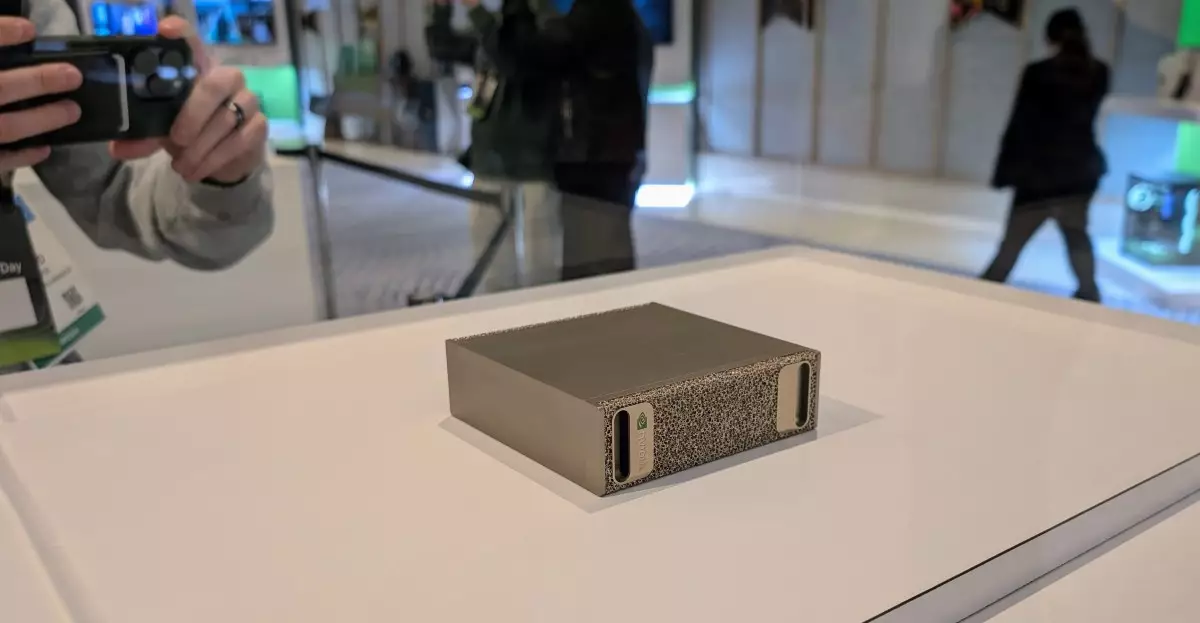Nvidia has once again positioned itself at the forefront of technological innovation with the introduction of its Grace Blackwell platform, designed specifically for AI supercomputing. This cutting-edge technology is set to redefine what is possible in the realm of artificial intelligence by enabling third-party manufacturers like Asus, Dell, and HP to harness its power for their own custom solutions. This move is not only about expanding market presence; it signifies a shift toward democratizing AI capabilities, allowing a broader spectrum of businesses to develop high-performance computing solutions tailored to their specific needs.
The Competition Heats Up
Asus, Dell, and HP are rising to the occasion by unveiling their unique takes on the GB10 super chip, which is integral to the Nvidia DGX Spark. Asus has introduced the Ascent GX10, a stylish mini PC that promises the same formidable performance benchmarks as its Nvidia counterpart. With 1,000 AI TOPS processing capability and a substantial 128GB of unified memory, the Ascent GX10 is designed to cater to both enthusiasts and professional users seeking advanced AI solutions. However, its aesthetics, featuring a white plastic chassis and distinctive carvings, may target a consumer market that values design as much as functionality.
The competitive landscape is compelling, especially with HP’s sleekly designed ZGX Nano AI Station G1n, which appears more industrial and suited for enterprise environments. This product aims to capture the attention of businesses that require dependable systems in server racks. On the other hand, Dell’s offerings embody a more utilitarian approach, opting for a simple black box with minimalistic features. While this may appeal to some, it risks blending into the crowded server space rather than standing out as a premium product.
Potential Market Impact
The introduction of these AI supercomputers could significantly alter the landscape of technology solutions across various industries. By giving manufacturers the tools to produce their own versions of Nvidia’s powerful AI processors, Nvidia is not just fostering competition but is also promoting innovation. Companies that traditionally wouldn’t have the resources to develop advanced AI systems now have the opportunity to implement cutting-edge hardware into their operations.
This critical development could lead to a surge in specialized software applications, further advancing AI technology’s real-world applications in sectors such as healthcare, automotive, and finance. For instance, AI systems could be more finely tuned to respond to industry-specific demands, streamlining operations, enhancing productivity, and delivering personalized services at an unprecedented scale.
Year of Innovation and Anticipated Releases
Looking ahead, Nvidia’s timeline for releasing its own DGX Spark, priced at $3,000, aligns neatly with its third-party partners. Dell has announced that its versions will be available by early summer 2025, marking a significant target date for many developers and enterprises eager to integrate AI supercomputing capabilities. Asus and HP have yet to unveil their release schedules, leaving potential customers in suspense. The uncertainty in availability raises questions about market readiness, especially as enterprises prepare for an AI-driven future.
Lenovo remains an interesting player to watch, with indications that they will also join the GB10 mini-computer fray. However, their lack of visibility in design discussions or strategic announcements heightens curiosity about their intentions. As Lenovo looks to carve out its niche in the AI supercomputing market, expectations will be high for a product that matches or exceeds the competitive benchmarks already set by its peers.
A Big Leap for AI Accessibility
The emergence of customizable AI supercomputers powered by Nvidia’s Grace Blackwell platform represents more than just a technological advancement; it symbolizes a pivotal moment in accessibility. As companies like Asus, Dell, and HP take the stage, we may soon witness an explosion of innovation that caters to a diverse range of users and applications.
These developments indicate a more inclusive technological future where AI resources are not just confined to mega corporations but are within reach for smaller businesses and startups alike. The ramifications of this democratization of technology could be profound, as companies across varied industries leverage these new capabilities to innovate and drive growth like never before. The era of personalized AI supercomputing has only just begun, and the possibilities are exhilarating.


Leave a Reply
You must be logged in to post a comment.